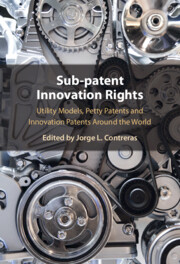Contents
2Overview of Worldwide Utility Model Filings, Litigation and Activity
Part IUtility Model Laws and Practices around the World
3The Rise and Fall of the United Kingdom’s Forgotten Utility Model: The Utility Designs Act 1843
8Utility Model Protection in Poland: In Search of a Regulatory Framework Capable of Incentivizing Innovation
9Key Performance Indicators for Utility Model Systems: An Application to Finland
10Reinventing the Wheel: The Rise and Fall of the Australian Innovation Patent
11China’s Utility Model Patent Legal System: Past, Present, and Future
16The Debate over Second-Tier Patent Protection in the United States
Part IIUtility Models in Action
18Treatment of Utility Models as Standards-Essential Patents
19Navigating Incomplete Harmonization: Businesses and the Utility Model Environment

